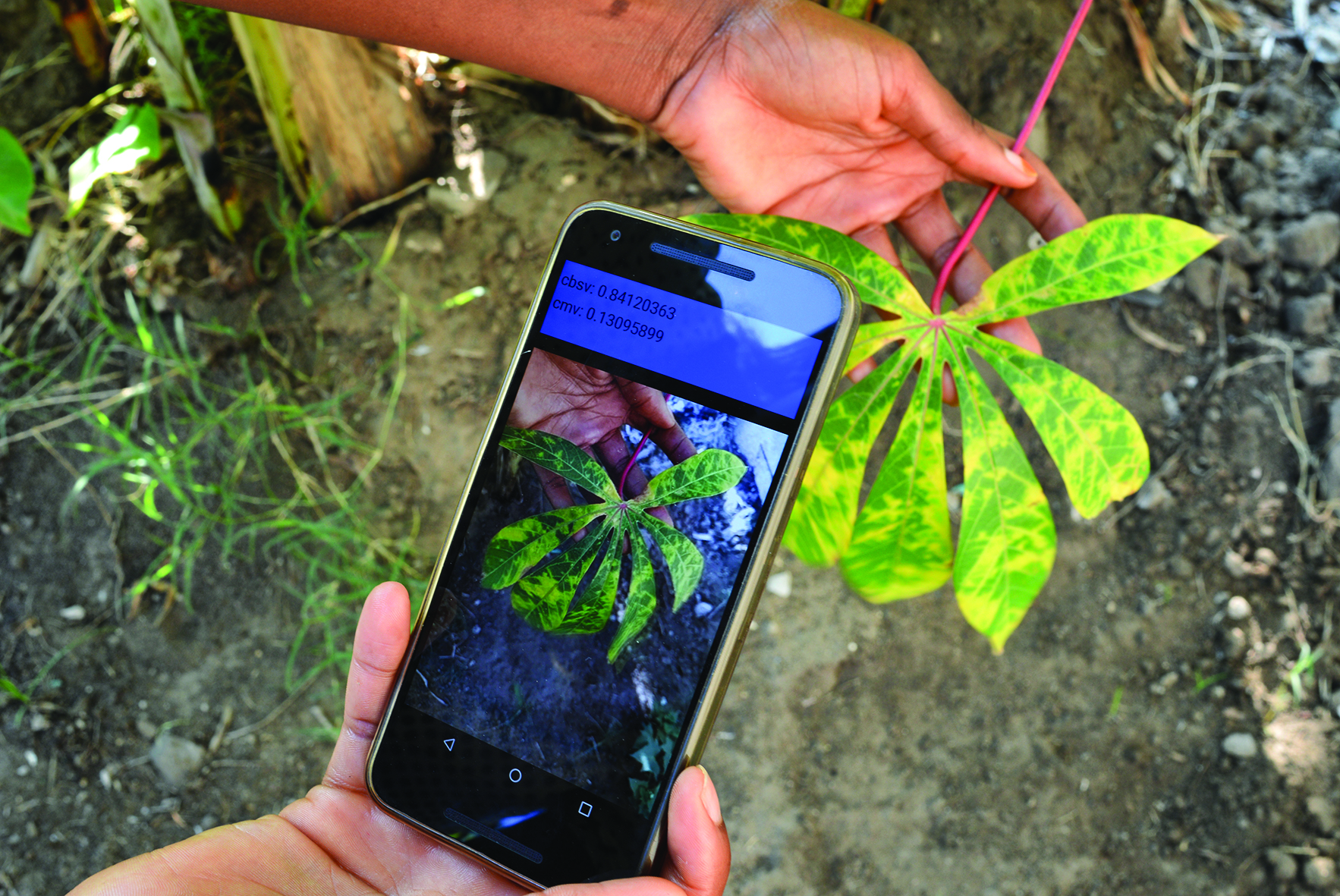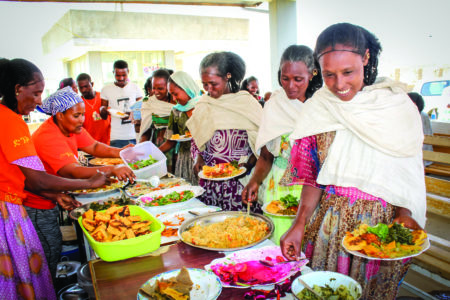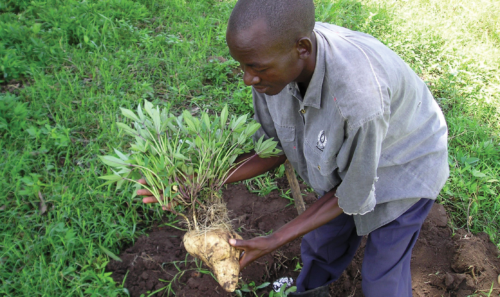
A crop disease outbreak requires rapid and specific intervention measures, if large yield losses are to be avoided, but farmers often struggle to identify what is causing the problem. A novel artificial intelligence (AI)-based mobile phone app could provide an effective, low-cost and easy-to-use diagnostic solution.

Background
Crop pests and diseases can develop and spread quickly, causing devastating losses that affect food security and incomes. Small-scale farmers in developing countries are particularly vulnerable since they often lack the knowledge and inputs needed to deal with such problems. But it is not only farmers who struggle. Extension agents and quarantine officials are often unable to identify diseases caused by viruses, such as sweetpotato virus disease. The symptoms of these diseases can vary widely and often depend on the cultivar and current local environmental conditions.
AI-based image recognition from mobile phone pictures has recently been shown to be a practical option for detecting plant diseases. It could be applied on a large scale in Africa, since mobile coverage is good and low-cost smartphones are becoming increasingly available. The main problem is that the recognition systems need to be ‘trained’ using thousands of images of plants.
This is currently performed by experts who diagnose the symptoms of plants and which may not be accurate when symptoms are unclear. Linking field images with diagnostic test results could enable AI training to recognize symptoms beyond the abilities of human experts, since it could potentially include patterns and shapes not distinguishable to the human eye. Such a system could also be programmed to track the location, weather conditions, soil type and other data relevant to the statistical algorithms used to produce a diagnosis.
Objectives
The project aims to link field diagnostic tests with an AI recognition system to accurately identify disease symptoms caused by plant viruses that are currently difficult to identify visually, with a success rate matching or exceeding the performance of trained crop specialists.
Approach
The project will involve a team of computer programmers, biotechnologists, virologists and bacteriologists, all of whom are experienced in working in sub-Saharan Africa. The team has already developed a molecular diagnostic platform that can identify the major viral diseases of cassava, yam, banana and sweetpotato, operated via a smartphone and an app. The system provides accurate information on the infection status of plants.
However, the cost of the current system limits its use to researchers, plant inspectors and large-scale seed producers, and it is unlikely to be adopted by smallscale farmers. The answer is to develop an image-based diagnostic tool that simply uses a mobile phone camera to identify a disease. This means using an AI system that continually learns from past test results. The novelty of this approach lies with linking two very different approaches to disease detection to enable a high level of image recognition-based diagnostic accuracy.
The project will leverage the network of researchers in the CGIAR Research Program on Roots, Tubers and Banana (RTB) to extend testing with national partners in: Uganda for cassava/banana with the International Institute of Tropical Agriculture (IITA); Kenya for potato with the International Potato Center (CIP) and; Nigeria for cassava and plantain with IITA.
Expected outcomes
Painstaking field work using cameras, spectrophotometers and drones at cassava field sites in coastal Tanzania and on farms in western Kenya has already generated more than 200,000 images of diseased crops to train AI algorithms. Using many of these images, researchers developed an AI algorithm with TensorFlow, an open-source dataflow software that can automatically classify five cassava disease; and by collaborating with Google, the team have been able to develop a TensorFlow smartphone app that is currently being field-tested in Tanzania.
The team will combine two smartphone apps, joining the results of field molecular diagnostics with an AI imagebased disease recognition platform. Results from the field tests will then be combined into the training data for the statistical algorithms used to program the AI system to learn and improve. The team will take pictures and perform diagnostic tests for a range of viruses, principally of cassava and sweetpotato. The AI app will be trained based on this data, and the improved performance evaluated and scaled up to reach the number of data points required for optimal AI training. Additional crops and pathogens will be included in a second phase, working with national research programs and other organizations in developing countries.
The approach has significant potential to reduce costs, and increase efficiency and precision compared with current options. It can be integrated within a national or regional pest and disease surveillance and response strategy, and could potentially be applied to any crop.
A platform housed by Penn State (www.plantvillage.org) will enable real time discussions of disease and pest diagnoses across the CGIAR community and with other experts to enhance SMS alerts from the DigiFarm platform (gui2de. georgetown.edu/projects/DigiFarm#). It is envisaged that these innovations, initially piloted in East Africa, will provide a model that can be extended to the range of locations where the RTB network operates, and in so doing impact the livelihoods of hundreds of millions of farmers.
Contact
Jan Kreuze
CIP, Peru
j.kreuze@cgiar.org
Thanks to our donors



